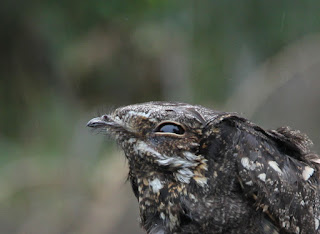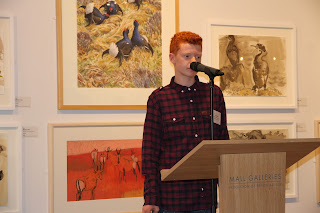Back in September I had the opportunity to present my thoughts and beliefs on the environment to a group of MPs in Westminster. As a contribution to the climate marches taking place across the world today, I wanted to share the transcript of what I said to the MPs on that day.
...........................................................
It's not very nice being at the back of the queue. To get to the front can seem a very long way off. It's frustrating and tiring waiting all this time just to get your turn. And I'm not talking about checking in at the airport or being last to be picked at school for the football team.
I'm talking about the natural world we live in being at the back of the queue, always last in line. How do I know this – because the science gives us the facts and 50%, yes 50% of Wildlife has been lost in the last 40 years. Please just pause a moment and think about that – 50% of wildlife lost in the last 40 years.
I listened very carefully to all of your leaders’ debates in the run up to the General election and made a tally on how often the natural world and the environment was mentioned. It was mentioned only twice, - just twice, for only a split second and guess where, yes, right at the end of the debates, last in line again.
Some people when they speak use phrases like “this planet of ours“ or “our planet “ - This planet isn’t “ours“ it isn’t owned by anybody. It’s not our right to keep taking from it and give nothing back.
We have learnt throughout History that you will not fall off the edge of the planet and hurt ourselves – BUT WE are hurting the planet, every day, all of us.
Everything we have comes from the natural world, but the natural world is evaporating rapidly in front of our eyes, and if things are to change we need to act. But act quickly, act NOW, don’t leave it until tomorrow as others have done. Change your attitudes and beliefs that someone else will save it.
I’m asking you all to make a pledge today – a pledge to put the natural world first in the queue when you are making decisions. And please pledge to consult my generation as well. No individual or group or organisation knows best, we can all learn from each other by respecting and sharing our knowledge.
There are fantastic organisations that can help you such as the RSPB of course but also youth organisations like A focus on Nature. I urge you to have a look at the “vision for Nature” report that they are publishing in Autumn and see what the younger generation are talking about.
You will have some tough work ahead and you will have to make some tricky decisions but I ask you before making your choices, have courage in your decision making to think 500 years ahead not just 5 years ahead. Do what you know is right.
So thanks for listening and when you get to the front of the queue to have your turn remember the Planet has been waiting a lot longer than you, so please do the right thing and let it go first."
I'm talking about the natural world we live in being at the back of the queue, always last in line. How do I know this – because the science gives us the facts and 50%, yes 50% of Wildlife has been lost in the last 40 years. Please just pause a moment and think about that – 50% of wildlife lost in the last 40 years.
I listened very carefully to all of your leaders’ debates in the run up to the General election and made a tally on how often the natural world and the environment was mentioned. It was mentioned only twice, - just twice, for only a split second and guess where, yes, right at the end of the debates, last in line again.
Some people when they speak use phrases like “this planet of ours“ or “our planet “ - This planet isn’t “ours“ it isn’t owned by anybody. It’s not our right to keep taking from it and give nothing back.
We have learnt throughout History that you will not fall off the edge of the planet and hurt ourselves – BUT WE are hurting the planet, every day, all of us.
Everything we have comes from the natural world, but the natural world is evaporating rapidly in front of our eyes, and if things are to change we need to act. But act quickly, act NOW, don’t leave it until tomorrow as others have done. Change your attitudes and beliefs that someone else will save it.
I’m asking you all to make a pledge today – a pledge to put the natural world first in the queue when you are making decisions. And please pledge to consult my generation as well. No individual or group or organisation knows best, we can all learn from each other by respecting and sharing our knowledge.
There are fantastic organisations that can help you such as the RSPB of course but also youth organisations like A focus on Nature. I urge you to have a look at the “vision for Nature” report that they are publishing in Autumn and see what the younger generation are talking about.
You will have some tough work ahead and you will have to make some tricky decisions but I ask you before making your choices, have courage in your decision making to think 500 years ahead not just 5 years ahead. Do what you know is right.
So thanks for listening and when you get to the front of the queue to have your turn remember the Planet has been waiting a lot longer than you, so please do the right thing and let it go first."

























